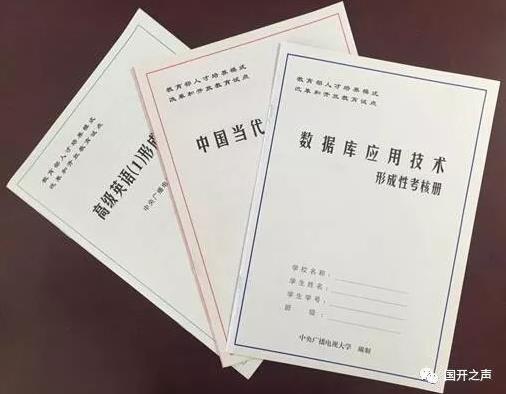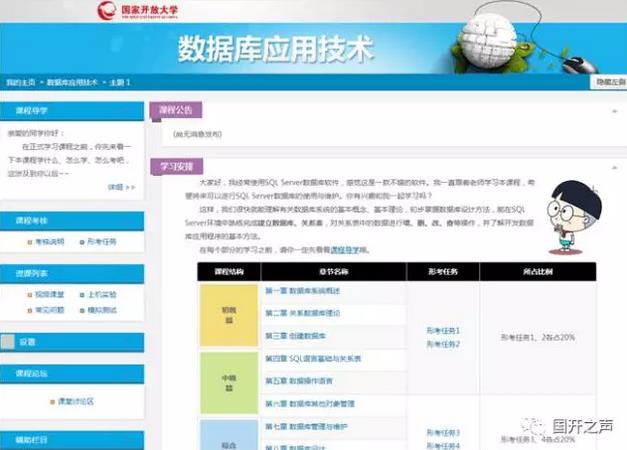 After a busy day at work, Xiao Li, a nurse in a 3A hospital in Beijing, opens her computer and logs into the Open University of China’s (OUC) formative assessment system to complete a test for her course in the public affairs administration major.
After a busy day at work, Xiao Li, a nurse in a 3A hospital in Beijing, opens her computer and logs into the Open University of China’s (OUC) formative assessment system to complete a test for her course in the public affairs administration major.
The test results will be treated as a part of the course evaluation and included in the total score. When talking about the “formative assessment”, Xiao Li is full of praise: “This kind of exam is very convenient. It allows me to finish my homework and record the learning results during my lunch hour, in the evening or whenever I have time. I can also talk with the teacher in a timely manner.” The formative assessment is one of the important reasons why he chose the OUC, “When I choose to study after work, I feel like I never have enough time. Now, half of my assessments can be completed online, which not only saves time, but also improves my learning efficiency. Since I know that the assessment will count towards my total score, I deal with every exam very seriously.”
Since the OUC carried out the Open Education Pilot Program and Learner Development Model Reform in 1999, it has treated formative assessments as part of curriculum evaluation, which changed the traditional single evaluation model of “one test decides all”, and adopted a new type of the assessment method which integrates formative assessment and summative examination. So-called “formative assessments” represent a form of on-going evaluation, including set homework, learning tests, practical activities, seminar and discussions, group learning, and learning records. Formative assessments are designed to strengthen the guidance and management of the teaching process, understand changes to the learning situation, promote independent learning, and cultivate the comprehensive abilities of the students.
In the early years, formative assessments in open education used print books. Students finished their homework at different stages in the learning process, and tutors regularly collected, reviewed, and recorded the homework. The results of the formative assessment were calculated as a part of the total score for the course, generally accounting for 20-30%.

The formative assessment books needed to be edited, printed, subscribed, and then distributed which was a long and overly complicated procedure. Often the books did not reach the students on time. Furthermore, the students needed to physically go to the school to hand in their homework and get their marked homework back. The teachers had to make sure that they returned the homework on time. As a result, it became difficult to coordinate the books with the work.
With the development and application of information technology, in 2005, the university began to explore the development and operation of an Internet-based Formative Assessment System. After more than a decade of development, the number of courses has increased from the original six to more than 130 and the number of participants has increased from about 10,000 in the first semester to more than 1.2 million at its maximum. In addition to the teaching progress schedule each semester, the formative assessment system (http://xk.opendu.edu.cn) will regularly publish formative assessment tasks. During a stipulated time period, students can log on to the formative assessment system to complete the tasks. The teachers then review the tasks submitted by the students and feedback the results and instruction opinions to the students in a timely manner.
In view of the relative controllability of Internet-based implementation, the proportion of Internet-based formative assessment scores as part of the total score for the course is generally set at 30-50%, with the aim of encouraging the students to pay more attention to the formative assessment. However, the fact that the formative assessment system, as an independently operating platform, is isolated from the Internet-based learning platform, means that the system itself is out of line with the teaching progress and content. Due to a lack of comprehensive learning support services, the implementation is not ideal.
In order to realise the in-depth integration of information technology and open and distance education, in June 2012 the university began to build a new type of learner development model based on “Six-Network Integration”. The OUC began building online learning courses in 2013, embedded formative assessment construction and operation from the start. The students can complete corresponding formative assessments while participating in learning online courses. Therefore, web-based formative assessments are not only an important aspect of online learning evaluation but also a significant part of online learning courses. They are of vital significance in constructing the OUC’s “Six-Network Integration” learner development model.

The network formative assessment in the “Six-Network Integration” learner development model is characterised for integration of evaluation objectives, diversification of evaluation measures and forms, with evaluation content spreading throughout the whole assessing process.
Integration of evaluation objectives: The network based formative assessment is an important part not only of the network based learning evaluation, but also of the network teaching content. It has a dual nature. The network formative assessment needs to combine closely with the teaching progress. Integrative teaching activities which involve teaching, learning and testing simultaneously are recommended, so that students’ learning results can be fed back timely, the effective implementation of the students’ learning progress can be strengthened, and the function of formative assessment in guiding, promoting and supporting study will be fully exerted.
Diversification of evaluation measures: The network formative assessment adopts the online means for students to submit answers, which supports not only computers, but also mobile terminals, like Pad and mobile phone APPs. Students can submit their homework at any time and teachers can review it immediately and gave feedbacks in time. At the same time, for each network learning course, electronic formative assessment homework is also provided, which allows students in the remote areas with underdeveloped network or students with individual demands to download or print from the Internet, and finish the formative assessment tasks offline.
Diversification of forms of evaluation: The online formative assessment can combine the features of different courses and different students to allow for the selection of different forms. It can adopt the form of periodical learning tests, themed panel discussions, collaborative group learning or even basic recording and evaluating of students’ learning behaviours including time spent learning, the learning process, and learning attitude.
Full programming of the evaluation contents: Online formative assessments not only examine the students’ basic knowledge and skills, they also help to reinforce exercises for key knowledge and skills, with the purpose to helpings students with web-based final exams. They can also act as a supplement to the online summative exams, which are designed to do what the online final exams cannot, such as improving the students’ attitudes, motivation, and learning process.
In order to push forward and strengthen the management of online formative assessments, the OUC has carried out several reform measures for learning, assessments, and evaluation. It conducted an integrated design for teaching and learning, so as to guide students to focus on their learning process, positively participate in study, and promote the implementation of the teaching process. By the end of the 2017 autumn semester, 156 online learning courses were operated in each branch and colleges around the country. Among them, about 56% of online core courses adopt 50% formative assessment, and 18% courses adopt 100% formative assessment.
By Gao Yuanyuan and Wu Yaqi, www.china.org.cn